RMG Sector in Bangladesh 2023 Assignment
RMG Sector in Bangladesh
RMG Full Form
A common abbreviation for ready-made garments, Bangladesh rmg sector ready-made garments.
Prospects of the RMG Industry
- Product Diversification
- Backward Integration
- Flow of Investment
- Labour Productivity
- Cheap Labor
- Research and Training
History of Bangladesh RMG Sector
After the independence of 1971, Bangladesh was one of the poorest countries in the world. There are no major industries developed in Bangladesh. The industry was making a crucial contribution to rebuilding the country and its economy none other than the RMG industry. which is now the single export earner of Bangladesh. This sector earns 81 % of the total export earnings of the country.
whereas our alone export earner jute industry started losing its golden days, it is the RMG sector that replaced it.
The apparel industry of Bangladesh started its journey in the 1980s, and come to today's position. The late Nurool Kader Khan was the pioneer of the ready-made garment industry in Bangladesh. He had a vision of how to transform the country. In 1978, he sent 130 trainees to South Korea where they learned how to produce readymade garments.
Contribution of the RMG Sector In Bangladesh
Different Sector
- Banking and Insurance
- Shopping and Logistics
- Contribution to Government
- Engineering Sector
- Utility Services
- Information and Communication Technology
- Emerging Consumer Market
Social Impacts
- Women Empowerment
- Child Labour
Problem and Challenges of the RMG Sector
- Lack of R & D
- Lack of Modernize Equipment
- Lack of New Investment
- Effect of Global Recession
- Energy Crisis
- Tied Monetary Policy
- Removal of Subsidy on Textile Sector
- Safety Issue
Contribution to the National Economy of the RMG Sector
- The sector contributes 38 % of industrial value addition
- Earn about 78 % of total export earnings
- Employs around 4.5 million workforces which majority Is women
- Generate a huge cliental base for banking, insurance, and shipping
- Transport, Hotel, Cosmetics, toiletries, and related other economic activities
- Provides indirect employment to 0.80 million workforces in accessories industries related to garments
- Provides 0.20 Million to the waste recycle industry related to the RMG sub-sector
- Contributes to 10.5 % of GDP through the RMG sub-sector
RMG Sector In Bangladesh 2023
The Ready-Made Garment (RMG) Sector in Bangladesh is one of the country's most significant and dynamic industries. Known for its exponential growth and global influence, the RMG sector plays a crucial role in Bangladesh's economy. With a strong focus on manufacturing and exporting a wide range of apparel products, including clothing, textiles, and accessories, Bangladesh's RMG sector has become a vital player in the global fashion supply chain. The sector has contributed significantly to employment generation, foreign exchange earnings, and the overall economic development of Bangladesh. While it faces challenges such as labor rights issues and environmental sustainability concerns, it continues to evolve and adapt to changing global market dynamics. Bangladesh's RMG sector remains a pivotal part of the country's economic landscape, impacting millions of lives and shaping the nation's global presence in the fashion industry.
Top ten groups in rmg sector in Bangladesh
✅ A dress from Youngone costs $1,888
How much can the export value of a garment be?
If you hear that, your eyes will surely rise. In the financial year 2022-23, Youngone exported each jacket for 1 thousand 888 dollars or 2 lakh taka. Not wrong, you heard right. They have exported this jacket made of synthetic fibers to the German brand Adidas.
Yangwon's examples of expensive clothing exports are not the only ones, last year they exported more than 1,000 jackets, each priced between $500 and $650. All in all, they are the most expensive garment exporters in Bangladesh. Their average export value of each garment last fiscal year was $19.
Yangwan Group's combined exports crossed the billion-dollar (1 billion) milestone earlier. However, the milestone of exports of billion dollars in garments alone was reached last fiscal year. During this time they exported 5 crore 3 million pieces of clothing. High-value garments, especially jackets have helped them reach the billion-dollar apparel export milestone. Most of their export-oriented garments are synthetic fibers.
✅ Ha-Mim's big market is USA
T-shirt is the cheapest garment exported from Bangladesh. A major part of the export income is coming from this t-shirt. However, Ha-Meem Group became the second top apparel exporter without exporting any T-shirts. One of their export sectors is pants. 45 percent of the group's export revenue comes from these pants. Besides, they export jackets, sweaters, shirts,s, and trousers.
In the last financial year, Ha-Meem Group exported 73.8 million pieces of clothing, which was valued at 612.5 million dollars. The average export price per piece of clothing was one hundred and eight dollars.
Ha-Meem Group Managing Director AK Azad said, 'We want to reach one billion (100 crore) dollars in exports of ready-made garments as soon as possible. For this, we are looking at the US as well as the European and Japanese markets. Already we have started exporting jackets. We are also planning to add more non-traditional products to the clothes we are currently exporting. AK Azad is the vice president of FBCCI, a trade association.
✅ Mandal clothes are going to 69 countries
From Asia to Europe, from Africa to America - Mandal Group's clothing is not going anywhere. The group exported garments to 69 countries last fiscal. Out of this, 6.5 million garments were exported to Spain at a maximum price of 1,489 crore taka or 15 crore dollars. Next on the list are France, Italy, the United Kingdom, the United States, and other European-American countries. In total, this group exported 17.48 million pieces of clothing worth 4276 million taka or 42.99 million dollars last financial year.
Mandal Group is the largest exporter of T-shirts. T-shirts accounted for 40 percent of the group's total export revenue last fiscal. Their average export value per piece of t-shirt is 244 taka or two and a half dollars.
Abdul Majeed Mandal is the founder of Mandal Group. Currently, his son Abdul Momin Mondal is the managing director. He is a member of the National Parliament of Sirajganj-5 Constituency.
✅ 14 crore garment export of DBL
Three decades ago, Dulal Brothers Limited (DBL) Group was established by exporting 3,000 pieces of polo shirts to the UK. In the last financial year, they exported 14 million pieces of clothing worth 42.86 million dollars.
C&A is the largest apparel buyer of DBL Group. The German-based retailer imported 26 percent of the group's total exports last fiscal. Next are H&M and Puma. 37 percent of garments were exported to these two buyers. Apart from this, world-famous brands like Hugo Boss, and Marks and Spencer are also buyers of DBL clothing.
In the last financial year, DBL garments were exported to 59 countries. 36 percent of the total clothing or 5 crore were T-shirts. Their export list includes underwear, shirts, jackets, trousers, etc.
DBL Group was formed by four brothers. They are Abdul Waheed, MA Jabbar, MA Rahim, and MA Quader.
Jeans account for 91% of Pacific exports
Chittagong entrepreneur M Nasir Uddin was the master behind the first jeans export from Bangladesh. His handmade Pacific Jeans are still leading jeans exports. At present, they are exporting knitwear and workwear along with jeans. However, 91 percent of Pacific Group's exports are jeans.
A major buyer of Pacific Jeans is Uniqlo, a Japanese multinational retailer. Apart from this, buyers such as C&A, Tesco, Marks and Spencer, and Tom Taylor trust Pacific. Pacific clothing is exported to 52 countries of the world. Last financial year, the export amount of this group was 4 thousand 38 crores or 406 million dollars.
Syed Mohammad Tanveer, Managing Director of Pacific Jeans Group, said, "We are the second generation of the company that started with my father. Starting with denim, we are now investing in diversified products. Our aim is to export more high-value garments by innovating innovative products. We believe that we will be able to maintain the continuity of the growth of Pacific Jeans.
Most of Standard's exports are trousers
Trousers are the major sector of Standard Group's export earnings. Exports of trousers accounted for 84 percent of the group's total revenue last fiscal. This group has exported garments to 32 countries of the world. In the last financial year, they exported 4 crore 33 lakh pieces of clothing, the price of which was 3 thousand 850 crore taka or 38 crore 71 lakh dollars. This group is owned by engineers Mosharraf Hossain and Atiqur Rahman. In 2013
YOUNGONE GROUP
In the outgoing 2022-23 financial year, the South Korean company Yangwon has shown a surprise by reaching the highest milestone of $100 million in apparel exports.
Two decades ago, YoungoneCorporation's garment exports were less than $20 million. At that time, this company, owned by South Korean entrepreneur Kihak Sangyi, had seven factories in Dhaka and Chittagong.
At that time, Yangwan was working on the construction of the Korean Export Processing Zone (KEPZ) on 2,492 acres of land in Anwara, Chittagong. After overcoming various obstacles, the factory started operating in KPZ in 2011. Along with that, their exports started increasing rapidly.
From the beginning, Kihak Tsang focused on manufacturing high-value garments along with incorporating advanced technology in the factory. As a result, Yangwan's exports continued to increase. This South Korean company reached the billion-dollar milestone in the last financial year 2022-23 in the export of garments made from Bangladesh. In this financial year, the company has exported 100 million US dollars or 9 thousand 945 crores worth of garments. This industrial group is currently the top garment exporter in Bangladesh.
DBL Group
14 crore garment export of DBL
Three decades ago, Dulal Brothers Limited (DBL) Group was established by exporting 3,000 pieces of polo shirts to the UK. In the last financial year, they exported 14 million pieces of clothing worth 42.86 million dollars.
C&A is the largest apparel buyer of DBL Group. The German-based retailer imported 26 percent of the group's total exports last fiscal. Next are H&M and Puma. 37 percent of garments were exported to these two buyers. Apart from this, world-famous brands like Hugo Boss, and Marks and Spencer are also buyers of DBL clothing.
In the last financial year, DBL garments were exported to 59 countries. 36 percent of the total clothing or 5 crore were T-shirts. Their export list includes underwear, shirts, jackets, trousers, etc.
DBL Group was formed by four brothers. They are Abdul Waheed, MA Jabbar, MA Rahim, and MA Quader.
PACIFIC JEANS
Jeans account for 91 percent of Pacific exports
Chittagong entrepreneur M Nasir Uddin was the master behind the first jeans export from Bangladesh. His handmade Pacific Jeans are still leading jeans exports. At present, they are exporting knitwear and workwear along with jeans. However, 91 percent of Pacific Group's exports are jeans.
A major buyer of Pacific Jeans is Uniqlo, a Japanese multinational retailer. Apart from this, buyers such as C&A, Tesco, Marks and Spencer, and Tom Taylor trust Pacific. Pacific clothing is exported to 52 countries of the world. Last financial year, the export amount of this group was 4 thousand 38 crores or 406 million dollars.
Syed Mohammad Tanveer, Managing Director of Pacific Jeans Group, said, "We are the second generation of the company that started with my father. Starting with denim, we are now investing in diversified products. Our aim is to export more high-value garments by innovating innovative products. We believe that we will be able to maintain the continuity of the growth of Pacific Jeans.
HAMEEM GROUP
Ha-Mim's biggest market is the United States
T-shirt is the cheapest garment exported from Bangladesh. A major part of the export income is coming from this t-shirt. However, Ha-Meem Group became the second top apparel exporter without exporting any T-shirts. One of their export sectors is pants. 45 percent of the group's export revenue comes from these pants. Besides, they export jackets, sweaters, shirts, and trousers.
In the last financial year, Ha-Meem Group exported 73.8 million pieces of clothing, which was valued at 612.5 million dollars. The average export price per piece of clothing was one hundred and eight dollars.
Ha-Meem Group Managing Director AK Azad said, 'We want to reach one billion (100 crore) dollars in exports of ready-made garments as soon as possible. For this, we are looking at the US as well as the European and Japanese markets. Already we have started exporting jackets. We are also planning to add more non-traditional products to the clothes we are currently exporting. AK Azad is the vice president of FBCCI, a trade association.
AKH GROUP
AKH's main export product is shirts
Shirts are the main export product of AKH Group, the ninth-leading apparel exporter in the country. Shirts accounted for 65 percent of the group's export revenue last fiscal. In total, they exported clothes worth 3109 crores or 312.6 million dollars.
Apart from shirts, the group is exporting various products including jackets, pants, and T-shirts. In the last financial year, they have exported about six and a half million pieces of clothing to 46 countries. AKH's main customer is H&M. AKH Group Chairman Delwar Hossain and Managing Director Shamsul Alam. Md. as deputy managing director. Abul Kashem.
PALMAL GROUP
Big splash on T-shirt
T-shirts are on the average cheap clothing list. Although cheap, the price of Palamal Group T-shirts is not low. Palamal's most expensive t-shirt is exported for 64 dollars or about 6500 taka. Last financial year they exported t-shirts at 41-64 dollars. The major buyers of these t-shirts are brands like Old Navy, Walmart, and Levi's.
In the last financial year, 43 percent of the group's export earnings came from T-shirts. In total, this industrial group exported garments worth 3838 million taka or 385.9 million dollars. Nurul Haque Sikder is the founder of Palamal Group. Currently, his son Nafis Sikder is the managing director of the group.
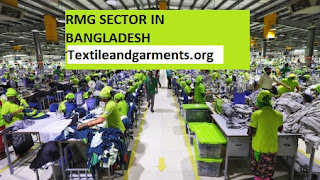
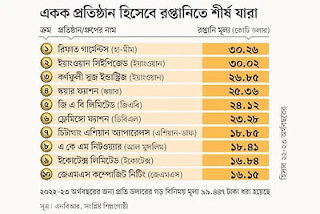
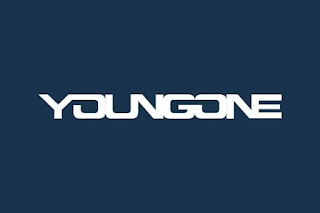

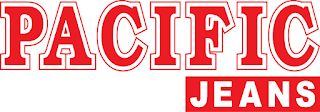
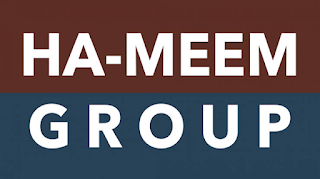
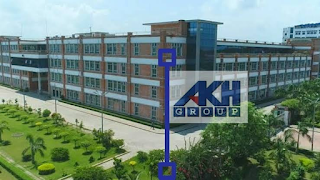




Comments
Post a Comment